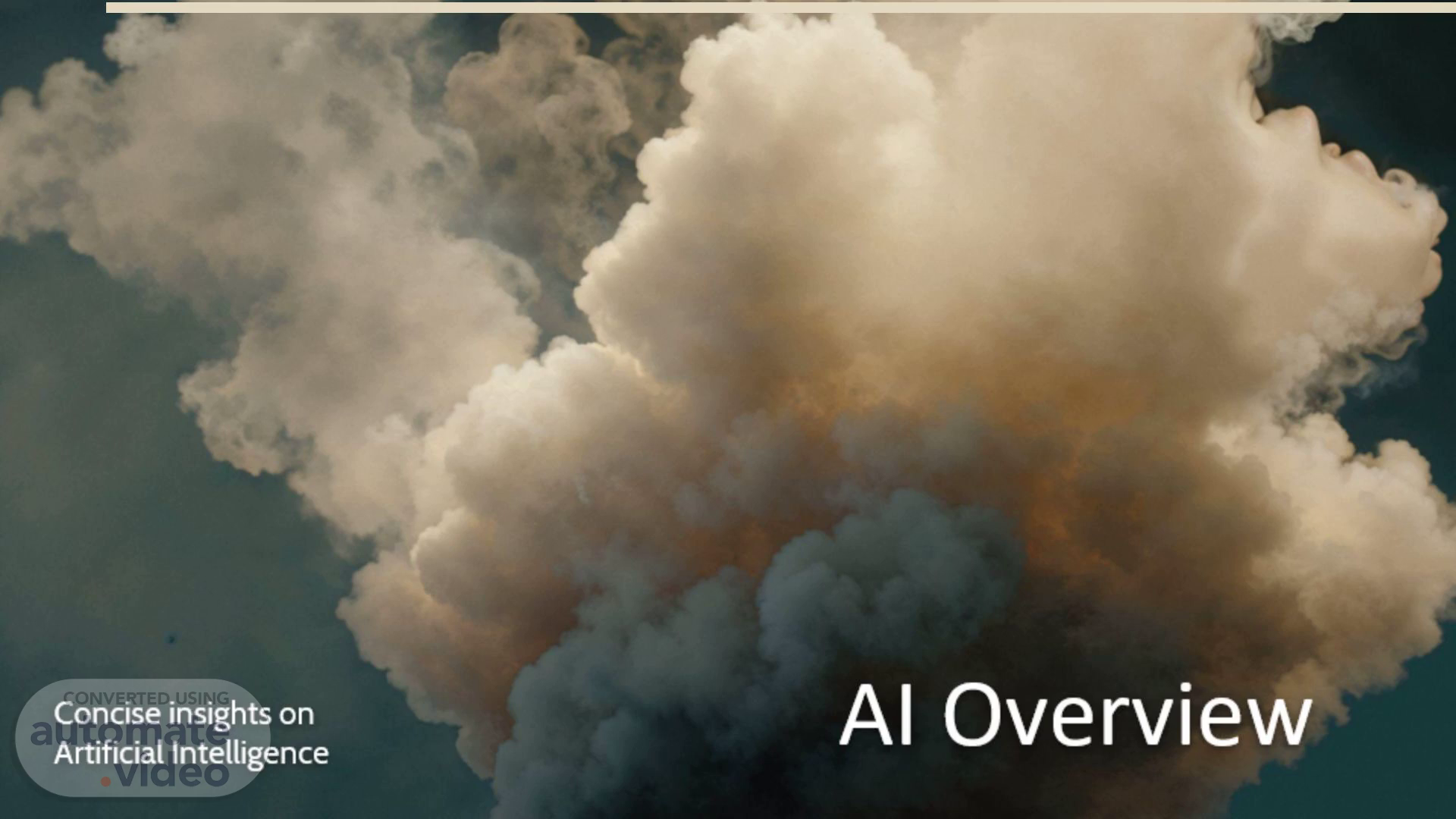Scene 1 (0s)
AI Overview. Concise insights on Artificial Intelligence.
Scene 2 (7s)
[image]. Introduction. Artificial Intelligence (AI) is the technology enabling machines to think, learn, and adapt like humans. It powers many current innovations and transforms industries globally. This presentation covers AIs basics, examples, and future outlook clearly and briefly..
Scene 3 (22s)
What is AI. 01.
Scene 4 (28s)
[image]. Definition and key traits. AI stands for Artificial Intelligence: systems designed to mimic human thinking and learning. Key features include data processing, algorithmic learning, and adaptive behavior. AI’s intelligence grows with experience, enabling smarter decision-making over time..
Scene 5 (44s)
Examples of AI in daily life. AI is everywhere: it helps detect diseases in healthcare, predicts trends in finance, drives self-driving cars in transport, generates creative content in entertainment, and powers virtual assistants in customer service. Education purposes These examples show AI’s broad and growing impact today..
Scene 6 (1m 0s)
Importance of AI today. AI is transforming many industries by enhancing efficiency and decision-making. It improves healthcare with early diagnosis, supports finance in market predictions, powers autonomous vehicles in transport, and enriches entertainment creation. Education purposes AI-driven assistants are reshaping customer service. Its growing presence underscores AI as a key driver of innovation in the modern world..
Scene 7 (1m 19s)
AI Types and Future. 02.
Scene 8 (1m 26s)
Different categories of AI. There are three main AI types: Narrow AI focuses on specific tasks, like voice assistants. General AI aims to replicate human-like thinking but is still developing. Super intelligent AI would surpass human intelligence, remaining theoretical. Understanding these categories helps grasp AI’s current capabilities and future potential..
Scene 9 (1m 43s)
[image]. How AI learns and evolves. AI learns by processing vast amounts of data through algorithms that identify patterns. Neural networks mimic human brain function to improve over time. This continuous learning enables AI to adapt and become smarter, improving its performance in real-world applications..
Scene 10 (2m 0s)
Future innovations and impact. AI’s future promises smarter devices, virtual assistants, creative breakthroughs in arts and sciences, and greater efficiency in industries. It will enable more personalized experiences and solve complex global problems, driving transformative change in everyday life and business..
Scene 11 (2m 15s)
[image]. Conclusions. AI is a powerful technology reshaping our world. Its ability to learn and adapt fuels advancements across sectors. Understanding AI types and mechanisms prepares us for the future innovations it will bring. The ongoing AI revolution demands readiness as it fundamentally changes how we live and work..
Scene 12 (2m 31s)
THANKS. Do you have any questions? [email protected] +251920936648.
